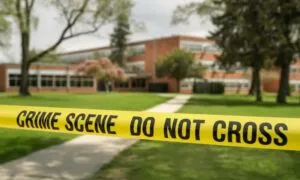When you think of a classic crime scene, odds are fingerprints come to mind—smudged on a window, pressed into a doorknob, or neatly lifted with a strip of tape.
But what makes fingerprints so central to forensic science? It’s not just TV drama. It’s the real-world reliability, the centuries of use, and the fact that no two humans—ever—have shared the exact same prints.
Even identical twins, who share DNA, carry distinct friction ridge patterns. That’s why, more than 100 years after their introduction into criminal investigations, fingerprints remain one of the most powerful tools in a forensic expert’s kit.
Let’s check out what makes fingerprints so valuable, how they’re classified, the patterns experts look for, and the surprising places they’re turning up today—including on social media.
Table of Contents
ToggleKey Highlights
- Fingerprints are unique and permanent, even among identical twins, making them a cornerstone of forensic science for over a century.
- Three main fingerprint patterns—loops, whorls, and arches—are used in classification, with loops being the most common.
- Fingerprint evidence now extends beyond crime scenes—social media photos are becoming a surprising new source.
- Advanced systems like IAFIS and AFIS aid in rapid matching, and courts still heavily rely on minutiae points for validation.
A Historic Look
Fingerprints are made up of friction ridges—the tiny raised patterns on our fingertips, palms, and soles. These ridges form in the womb and don’t change unless the skin’s deepest layer is permanently damaged.
The science of studying these patterns is called dactyloscopy, and it’s been around a lot longer than you might think.
Back in the 1800s, scientists like Sir Francis Galton and Sir William Herschel recognized the potential of fingerprinting for personal identification.
A little earlier, in 1823, a Czech physiologist named Jan Evangelista Purkyně described nine distinct fingerprint patterns. His work laid the foundation for what would become a global standard.
How Fingerprints Are Classified

In forensic science, fingerprints aren’t just about the visible swirls and loops. There’s a methodical system behind how they’re categorized.
The most widely used system is the Henry Classification System, developed in the late 19th century by Sir Edward Henry.
It organizes fingerprints into types and subtypes to make searching and comparison more manageable—especially in massive databases like the FBI’s IAFIS (Integrated Automated Fingerprint Identification System).
The Three Major Types of Fingerprint Patterns
| Pattern Type | Description | Prevalence |
| Arches | Ridges flow from one side to the other, forming a wave or peak | ~5% |
| Loops | Ridges enter from one side, recurve, and exit the same side | ~65% |
| Whorls | Circular or spiral ridges with two deltas | ~30% |
Arches

Arches are the least common fingerprint pattern, making up only about 5% of prints.
They don’t have deltas or cores—just a smooth wave-like flow from one side to the other. However, this is something that can vary:
- A study published in the International Journal of Advances in Biology found arches in 8.33% of the sample population.
- Another study by Ashok Rastogi reported arches in 6.0% of cases.
Subtypes
- Plain Arch – Ridges rise gently and then fall.
- Tented Arch – Sharper angle in the center, sometimes resembling a pitched tent.
Forensic Note
Because they’re less complex, arches can be less helpful for positive identification, but great for exclusions.
If the fingerprint at a scene has a whorl and your suspect has all arches, that alone can tell you a lot.
Loops

Loops are by far the most common pattern, appearing in roughly 65% of fingerprints, as per the Crime Scene Investigator Network.
Subtypes
- Ulnar Loop – Opens toward the pinky (ulnar side).
- Radial Loop – Opens toward the thumb (radial side).
Loops require
- A delta (a triangular ridge pattern)
- A core (the center of the loop)
- A ridge count from the delta to the core, often used to classify further
Forensic Note
Ridge count becomes important when trying to differentiate one loop from another.
A count of 9 or fewer might be noted as “I”, while 10 or more gets an “O” in subsecondary classifications, as per SCRIBD.
Whorls

Crime Scene Investigator Network’s information show that Whorls make up about 30% of fingerprint patterns and tend to be more complex. They always feature two deltas and at least one recurving ridge.
Subtypes
- Plain Whorl – Regular circular pattern.
- Central Pocket Loop Whorl – Loop with a central spiral.
- Double Loop Whorl – Two separate loops.
- Accidental Whorl – A mash-up of patterns that doesn’t fit any other category neatly.
Forensic Note
Whorls tend to be very distinct, and that helps when matching prints in a criminal investigation. Their complexity makes accidental duplication nearly impossible.
Classification Systems
Beyond the broad types and subtypes, forensic specialists use various layers of classification to organize fingerprints, especially in large-scale systems like IAFIS or Interpol’s AFIS, according to Thales Group. Here’s a quick breakdown:
Henry System Core Elements
- Primary Classification: Uses numerical values assigned to whorls.
- Secondary Classification: Letter codes for arches, loops, whorls.
- Subsecondary Classification: Groups by ridge count.
- Major, Final, and Key Classifications: Further refine the print based on specific finger patterns or ridge features.
Special cases—like missing fingers or scars—are handled with protocols such as mirroring the opposite hand or logging all possible patterns.
Real-World Use of Fingerprints

Fingerprints aren’t just theory—they play a major role in everything from homicide investigations to disaster victim identification.
Crime Scenes
Latent fingerprints—the invisible kind left behind when someone touches a surface—can be picked up with powders, chemicals, or superglue fuming.
These are then scanned and compared against known databases. If a match pops up, it can place someone at the scene, tie them to multiple crimes, or eliminate suspects.
- Case Example: A burglary and murder case involving a broken window revealed a latent print on the glass. Cross-checking with IAFIS led directly to a repeat offender, resulting in a swift arrest.
Civil Uses
Fingerprinting also plays a big role outside the courtroom:
- Disaster Victim Identification – In natural disasters or accidents, fingerprints are often the only usable ID method. In a recent 12-month period, the FBI identified 76% of 1,708 unidentified deceased through fingerprint analysis.
- Background Checks – Employment, immigration, and licensing often require fingerprint-based vetting.
- Missing Persons – In cases involving memory loss or unconscious patients, fingerprints can provide a fast, reliable ID.
In Court
When fingerprints make their way into a courtroom, things get technical.
- Analysts testify about minutiae points—tiny details like ridge endings, bifurcations, and dots.
- Some countries require a minimum number of matching minutiae (e.g., 12 in France, 16 in England) for a match to be legally binding.
- The “one dissimilarity rule” can invalidate a match if a single inconsistency is found.
Debates over reliability occasionally flare up, but when done correctly, fingerprint analysis remains one of the most trusted forensic tools worldwide.
The Social Media Twist

Fingerprints aren’t just showing up at crime scenes anymore. In a surprising twist, social media has become a new source of print evidence.
With the proliferation of smartphones and the ubiquity of social media platforms, individuals frequently share images that inadvertently capture their hands.
According to Forensic Training Online, these images can contain sufficient ridge detail to extract identifiable fingerprints.
Law enforcement agencies have utilized such inadvertent photographs to identify suspects in cases involving firearms, drug offenses, and other crimes .
How It Happens
People often post photos holding objects—cups, guns, phones—and unintentionally capture fingerprint details. Criminals, in particular, sometimes incriminate themselves by showing off.
Real Cases
- Connecticut: A suspect in a sexual assault case was identified by a fingerprint visible in a selfie.
- Ontario: A felon posted a photo with a firearm. His print was enhanced from the image and matched.
- Australia: A man was connected to child exploitation images by enhancing his fingerprints in background reflections.
Forensic Tools
Experts use image-editing software like Photoshop to enhance prints, adjust for angle, lighting, and focus. Once cleaned up, the image can be submitted to systems like AFIS just like a regular latent print.
Training
Courses such as “Social Media Fingerprints and Other Inadvertently Photographed Ridge Detail” are now offered to law enforcement professionals worldwide—complete with certification credits.
The Takeaway
Fingerprinting isn’t going anywhere. If anything, it’s becoming even more relevant in a world where cameras are everywhere and digital traces follow us around.
From the enduring usefulness of loops, whorls, and arches to the advanced classification systems behind every forensic hit, the world of fingerprint forensics is both an art and a science.
Whether pulled from a shattered window, a smudged doorknob, or a low-res selfie, fingerprints continue to tell stories—and often, those stories lead to justice.
As the world gets more digital, the tools of forensic science are adapting right along with it. But one thing remains the same: fingerprints are personal, permanent, and uniquely ours.
References
- airccse.com – Fingerprint Distribution Features in the Population of Adjara (Georgia)
- pmc.ncbi.nlm.nih.gov – Relation of Primary Fingerprint Patterns With Gender and Blood Group: A Dermatoglyphic Study From a Tertiary Care Institute in Eastern India
- crime-scene-investigator.net – The Science of Fingerprints – Classification and Uses
- scribd.com – Fingerprints Classification
- thalesgroup.com – Automated Fingerprint Identification System (AFIS) overview – A short history
- fbi.gov – 30-Year-Old Murder Solved Fingerprint Technology Played Key Role
- forensictraining.online – Social Media Fingerprints and Other Inadvertently Photographed Ridge Detail
Related Posts:
- 26 Most Dangerous Cities in US - Updated Statistics for 2025
- AI Digital Twins Set to Revolutionize Mental Health…
- Top 20 Most Dangerous Cities in California for 2025…
- America's Murder Capitals: A 2025 Ranking of the…
- How to Break a Window in an Emergency? - Tips &…
- 12 Worst Neighborhoods in Chicago - Dangerous Places…








